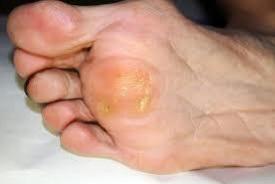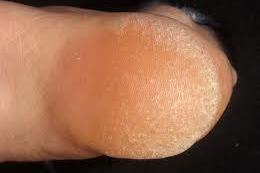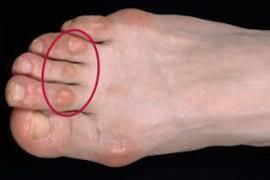Expert care to keep feet healthy
Regular care and attention can make a big difference in keeping your feet healthy and happy for the long term. Our routine footcare deals with all kinds of everyday issues such as calluses, corns and cracked heels. As well as assessing for signs of foot damage or potential problems so that our podiatrist can treat them right away.
Cutting and caring for toenails is an essential part of routine footcare and we’re experienced in maintaining and advising on how to and keep your nails healthy.
We’ll also assess ingrowing toenails and thickened nails to decide on the best way to treat them.
Hard skin, calluses and corns are particularly common problems which we can remove quickly and painlessly – and we can also arrange a home visit if you have problems with mobility.
Diabetes
Caring for your feet is extremely important if you’re living with diabetes because of potential problems with foot sensation and circulation.
At Revivefootcare , we’ll carry out a comprehensive and thorough diabetic foot assessment to pick up any concerns. This includes checks for changes in sensation as well as pain, wounds, corns, calluses and blisters. We’ll advise on footwear and caring for your feet at home as well as treating any problems.
WHAT IS A CORN?
A corn is a kind of callus, made of dead skin. They usually form on smooth, hairless skin surfaces, especially on the top or the side of the toes. They are usually small and circular, with a clearly defined center that can be hard or soft. Hard corns tend to be small and they occur in areas of firm, hard skin, where the skin has thickened or where there are calluses and in bony areas of the foot. Soft corns tend to be whitish in color, with a rubbery texture. They more commonly occur between the toes, in areas of moist and sweaty skin. Calluses and corns are not normally harmful, but sometimes they may lead to infections or ulcerations of the skin, especially among people with diabetes and those with poor circulation in the feet.
What is a callus?
A corn is a type of callus. A callus is a section of skin that has become toughened and thick because of friction, pressure, or irritation. They often happen on the feet, but they can occur on the hands, elbows, or knees.
Calluses are yellowish or pale in color. They feel lumpy to the touch, but as the skin
is thick, it may be less sensitive to touch compared with the skin around it.
Calluses are often bigger and wider than corns, with less defined edges. They commonly appear where the skin frequently rubs against something, such as a bone, some item of footwear, or the ground.
They typically form over the bony area just under the toes, areas of skin that take the person's weight when they are walking.
Signs and symptoms
Corns and calluses can make a person feel as if they are walking on stones. The following signs or symptoms may indicate that there is a corn or callus:
a raised, hardened bump
a thick and rough area of skin
skin that is flaky and dry or flaky and waxy
pain or tenderness under the skin
If a corn or callus becomes very inflamed or painful, the patient should seek medical advice. Patients with poor circulation, fragile skin, or nerve problems and numbness in the feet should talk to their doctors before treating corns and calluses at home. People with diabetes, peripheral neuropathy and peripheral arterial disease need to be particularly watchful.
REMOVAL
A podiatrist might cut away some of the thick skin with a scalpel to relieve pressure on the tissues that lie beneath. People should not cut the corn or callus themself as it could make it more painful and the risk of infection is high.
Causes and risk factors
The following risk factors are linked to a higher incidence of corns and calluses:
anything that causes pressure or friction on the skin
shoes that are too tight or too high-heeled, causing pressure
shoes that are too loose, causing friction
a badly placed seam in a shoe that rubs against the skin
socks that do not fit well
wearing no socks
walking barefoot regularly, as the skin will thicken to protect itself
repeated actions such as jogging or walking in a particular way
older age, as there is less fatty tissue in the skin, which means less padding and a higher risk of developing calluses, especially on the ball of the foot
Calluses often appear on the feet, but friction and pressure can also cause calluses on the hands. People who frequently cycle or use hand tools without wearing gloves can develop them. Repeated kneeling or resting elbows on a table can cause calluses on the knees or elbows.
Bunions, hammertoe and other foot problems and deformities increase the risk of corns and calluses. A bunion is an abnormal, bony bump that develops on the joint at the base of the big toe. A hammertoe is when a toe becomes curled up like a claw.

Prevention
With treatment, corns and calluses can be removed, but they may return without lifestyle or footwear changes. The following measures may help reduce the risk of developing corns and calluses:
Wearing well-fitting socks and footwear can help to prevents corns and calluses.
Wash the feet with soap and water every evening. Use a scrubbing brush.
Apply a specially moisturizing foot cream after washing and drying them well. Do not use a body lotion. Foot lotions are available for purchase online.
Wear well-fitting shoes and socks with seams that do not rub the skin.
Shop for shoes later in the day, when the feet are at their largest, because feet swell slightly as the day progresses.
Deal with any foot pain or skin irritation as it arises.
Have a regular check up with a foot specialist.
When trimming the toenails, cut straight across and not down at angles or over the edges.
Use a pumice stone or foot file regularly, and remove hard skin gently. Pumice stones are available for purchase online.
Wear clean socks every day and use talcum powder to prevent sweating. Talcum powder is available for purchase online.
Protect the hands when using tools, either with padded gloves or by padding the tool handles.









